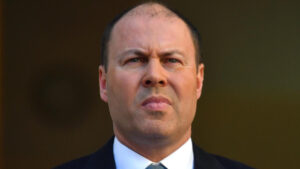Home » Commentary » Opinion » Coronavirus: Road map needed for getting back to work
· The Australian
 We all hope social distancing is saving lives, but there is no doubt that it is destroying livelihoods. For many working-age people, the only thing worse than catching the coronavirus is losing your job to it. Many small businesses are suffering just as much. In the current environment, even big businesses are at risk of failure.
We all hope social distancing is saving lives, but there is no doubt that it is destroying livelihoods. For many working-age people, the only thing worse than catching the coronavirus is losing your job to it. Many small businesses are suffering just as much. In the current environment, even big businesses are at risk of failure.
Responding to the spike in unemployment caused by the coronavirus epidemic (and measures to combat it), Scott Morrison put the economy into hibernation this week. He didn’t say for sure when it would come out. That’s the $320bn question.
Some epidemiologists fantasise that the government can surf the epidemic wave by tightening and loosening social-distancing rules week by week, keeping infection rates just low enough not to overwhelm hospital emergency departments without harming the economy. Boris Johnson tried that approach in the UK. It didn’t last a week.
With Australia now heading into lockdown, we should expect to remain locked down. The only alternative seems to be to wait until at least 60 per cent of the population has been exposed so that we achieve so-called herd immunity. But what politician wants to go down in history as the one who killed 50,000 voters?
So it looks like we’ll all be working from home until this thing is over, and no one knows how long that will be. Predictions that we’ll be in lockdown for six months seem exaggerated, and fearmongering around an alleged 18-month lockdown seems downright irresponsible. Modelling from sociologist Mikhail Prokopenko and a team at the University of Sydney suggests 100 days of effective social-distancing (3.2 months) should do the trick.
Lest we all get a bit too obsessed with coronavirus avoidance, it’s important to remember that we don’t have to get all the way to zero infections before we can get back to work. We just have to reach the point where every newly infected person can be quickly identified, quarantined and treated.
The sooner we reach that point, the more of that $320bn we can save. That won’t resurrect Josh Frydenberg’s surplus, but it will limit the size of the hole. Even more importantly, the shorter the shutdown, the more businesses will be saved.
And until we reach the reopening point, if businesses are going to stay in business, they have to know what to expect. A handout is nice, but a planning horizon would be nicer. The government has so far failed to provide this. What businesses need now even more than money is a coronavirus end game.
We’ve all heard the message that the economy is in hibernation. What we haven’t heard is: when will the government wake it up? What will the triggers be? What sequencing will the government use in relaxing social-distancing rules? Who will get to open first, and who will have to wait until the bitter end?
It’s easy to imagine the outlines of a reawakening schedule: agriculture and industry gearing up to full production, followed by daytime-only restaurants and cafes, then schools and offices. Catering halls and gyms will probably have to wait. Last in line will be airlines and cruise ships.
That’s not a plan. It’s not even a proposal. Only government can lay out a proper timetable for waking up the economy. But so far, the government doesn’t seem to be talking about it at all.
Granted, it’s impossible for the government to set a firm date for reopening the economy. But it can set targets. For example, if daily new cases fall below a certain number for five days in a row, what kinds of activities can go forward? If businesses know under what conditions they’ll be allowed to reopen, they can start planning for it. Without planning, they’re much more likely to stay closed forever.
The government is flirting with economic armageddon. The Prime Minister has warned that businesses “may go into hibernation and close down for six months”, while the Treasurer chimes in with “businesses will close and people will lose their jobs”. This is not the kind of talk to inspire confidence.
Australia finally has a plan for defeating the virus. Now it needs a plan for reviving the economy. The more specific, the better.
The government can potentially save billions of dollars by being more forthright with its economic planning. Lenders could price the risk of extending credit if they knew under what conditions businesses would be allowed to reopen. One week could make the difference between receivership and survival for many firms.
Entrepreneurship is all about calculated risk-taking. Businesses will play the odds if they know the payout terms. Give them detailed targets and businesses will get to work on planning to open.
Coronavirus: Road map needed for getting back to work